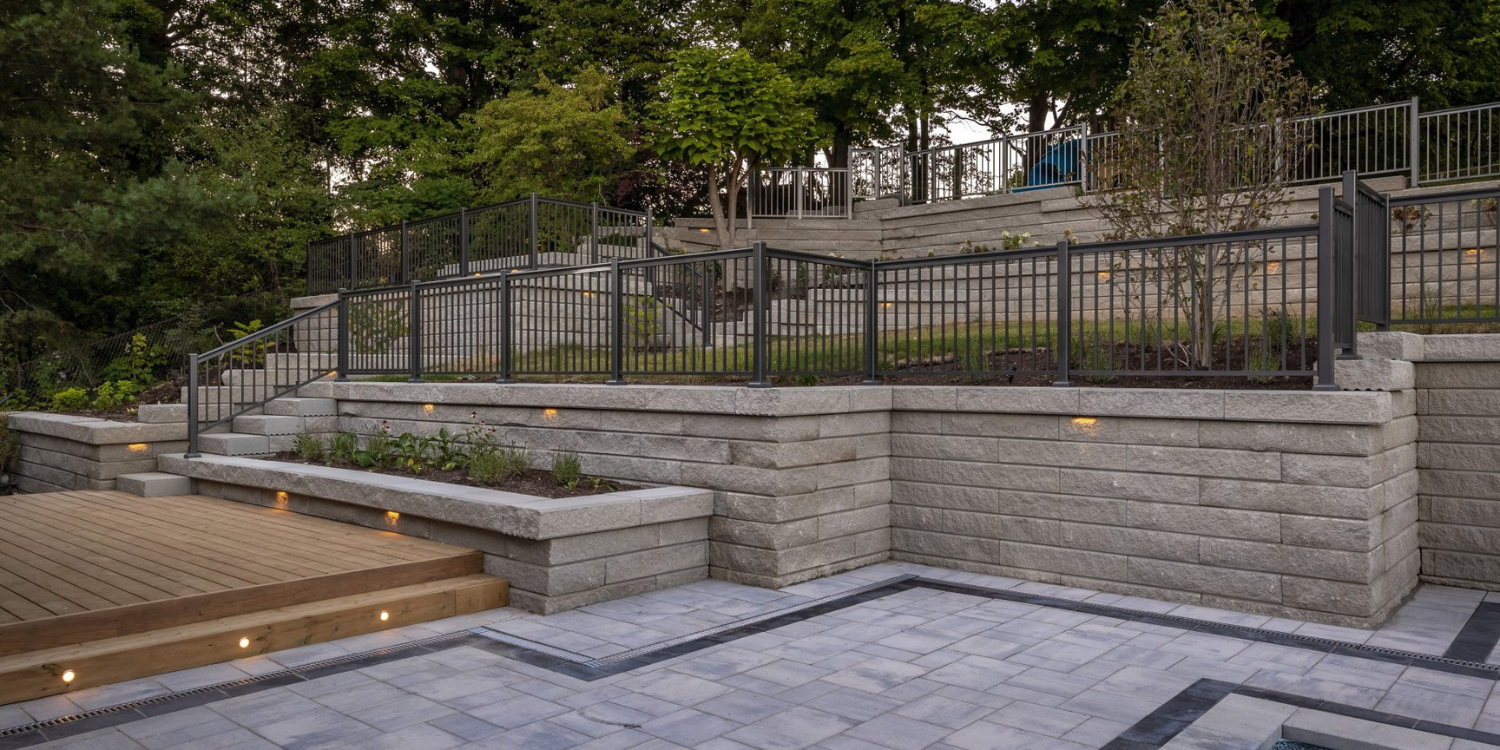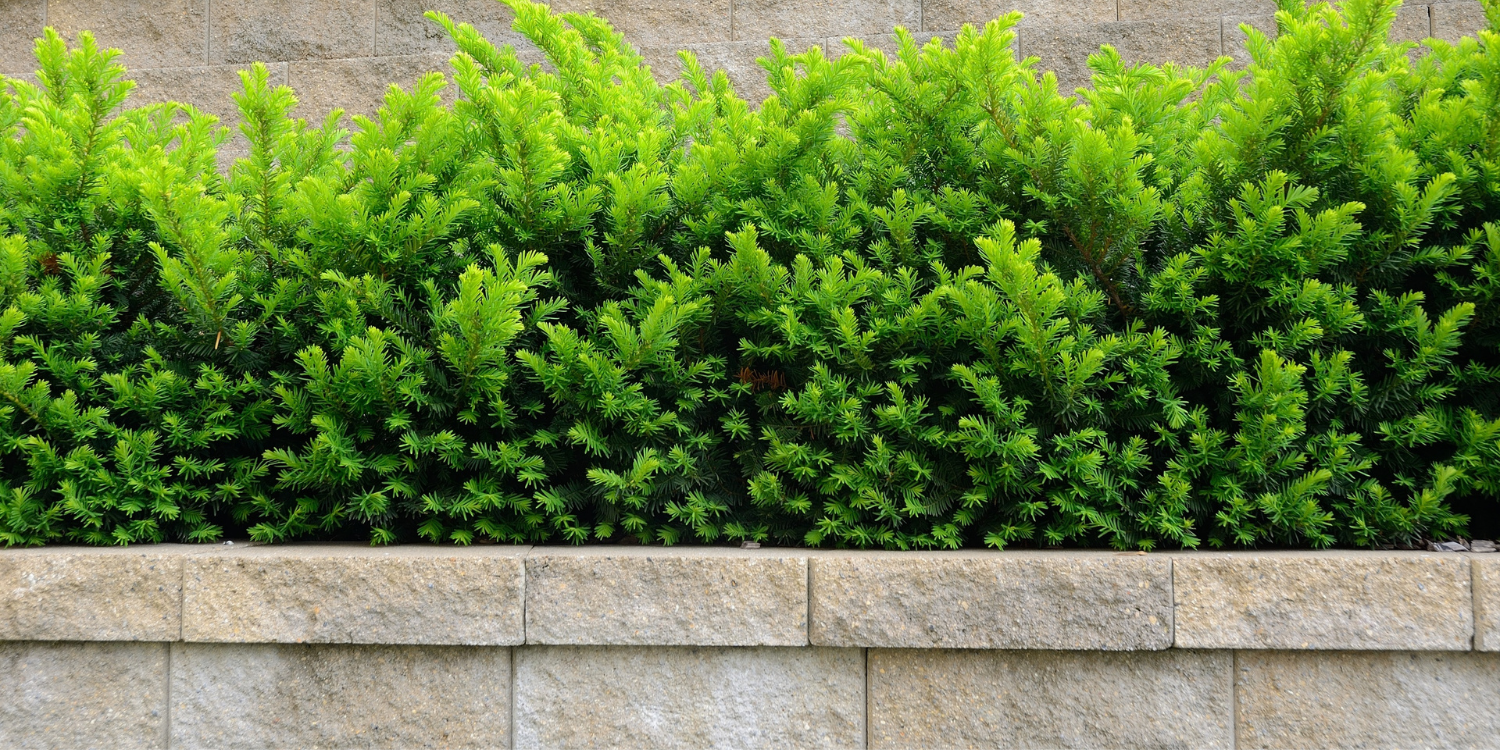Thinking of Building a Retaining Wall? Check Out This Comprehensive FAQ Guide
Building a retaining wall doesn’t have to be complicated. While they must be practical, they can also be stylish and durable. Thinking of putting one up? Check out our FAQ guide below for all you need to know.
What’s the Purpose of a Retaining Wall?
The primary purpose of a retaining wall is to counteract the forces of gravity and stabilize sloped landscapes, preventing soil erosion and providing support for vertical grade changes. By doing so, it holds back soil and rocks, effectively turning a hill or slope into a flat surface. Beyond this functional aspect, retaining walls can also serve aesthetic purposes, acting as a design element in landscaping, defining spaces, or providing terraced garden areas. They can enhance the overall appearance of outdoor spaces, making them both practical and decorative.
How Do I Know I Need a Retaining Wall?
Steep slopes on your property can benefit from retaining walls since they minimize erosion. If you often notice pools of water accumulating after rainfall, a retaining wall can help direct this runoff and protect your landscape.
For those looking to elevate their garden’s aesthetics, retaining walls can be a design choice, creating terraces or emphasizing certain areas. They also serve as crucial defences, shielding structures from encroaching soil.
What Materials Are Commonly Used for Retaining Walls?
Several materials can be used for retaining walls, each offering unique benefits. The most common ones include:
- Natural Stone: This offers a timeless aesthetic, with types like armour stone, and flagstone being popular choices.
- Concrete Blocks: These are strong, durable, and can be designed to look like natural stone.
- Timber: Though not as long-lasting as stone or concrete, wood offers a rustic appearance but may require replacement over time due to decay.
- Brick: While less common, bricks can provide a classic look and substantial strength.
How Tall Should My Retaining Wall Be?
The height of a retaining wall is primarily determined by the materials used and local building codes. Generally, gravity walls (those that rely on their weight) can be up to 3-4 feet tall. Taller walls, especially those over 4 feet, typically require additional reinforcement and should be designed by professionals. Always check local regulations when planning a retaining wall.
What Are the General Steps for Building a Retaining Wall?
- Site Assessment: Start by assessing the site, noting the slope, type of soil, and any water drainage issues.
- Design & Planning: Decide on the height, length, materials, and layout of the wall. If it’s a larger wall, consider consulting a professional.
- Digging the Trench: Dig a trench that’s deep and wide enough to accommodate the base material and the first row of your wall material.
- Laying the Base: Fill the trench with a layer of base material (like gravel) and compact it. This provides a solid foundation.
- Building the Wall: Starting from the lowest point, lay the first row of materials, ensuring they’re level. Continue stacking, making sure to offset the seams for added stability.
- Install Drainage: Place a drainage pipe behind the wall, covering it with gravel. This prevents water buildup, which can damage the wall.
- Backfilling: As you build the wall, backfill it with gravel to support and stabilize it.
- Finishing Touches: Once the desired height is achieved, cap the wall if necessary and landscape around it.
Do I Need Drainage for My Retaining Wall?
Absolutely. Drainage is crucial for the longevity of a retaining wall. Without proper drainage, water can accumulate behind the wall, increasing pressure and potentially causing the wall to fail. Installing gravel and drainage pipes behind the wall helps direct water away, reducing the risk of damage.
How Do I Ensure My Retaining Wall is Stable?
Stability is achieved through a proper foundation, correct design, and the right materials. Typically, a trench is dug and filled with a base material like gravel. The wall should lean slightly into the soil it’s retaining (this is called a ‘batter’). Using geogrids, which are mesh-like materials, can also reinforce the wall.
Can I Build a Retaining Wall Myself?
While small, decorative retaining walls are a relatively accessible DIY project, larger wall projects, especially those over 3-4 feet, should involve professionals. This ensures the wall is structurally sound, adheres to local codes, and has proper drainage.
What Can I Plant Near My Retaining Wall?
Planting near a retaining wall can enhance its aesthetic and help with drainage. Opt for plants with deep roots for erosion control, like shrubs and certain perennials. Avoid trees or plants with expansive root systems, as they can compromise the wall’s integrity.
How Do I Choose the Right Retaining Wall Material for My Project?
When selecting materials for a retaining wall, consider factors like durability, aesthetics, and cost. Natural stone is resilient and offers a timeless appeal, while concrete blocks provide strength and can be cost-effective. Wood, although organic and rustic-looking, may decay over time. It’s essential to research various options and perhaps consult with local professionals or suppliers to ensure the chosen material aligns with the project’s purpose, desired look, and local conditions.
What Is the Best Type of Stone for Retaining Walls?
When considering natural stones for retaining walls, think of practicality without compromising on appearance. Armour stone is renowned for its robustness and can withstand harsh conditions. Flagstone, being flat, is easy to work with and creates a sleek, even finish. Remember, the right stone makes all the difference in the wall’s longevity and visual appeal.
How Long Can I Expect My Retaining Wall to Last?
The lifespan of a retaining wall depends on the installation, materials used, and maintenance. Concrete and stone walls can last for decades, often 50-100 years, with proper care. Timber walls have a shorter lifespan, typically between 10-20 years, due to potential decay.
Building a Retaining Wall? Here’s Why You Should Choose Grand River Natural Stone
Builders, landscapers, and homeowners from across Southwestern Ontario trust us for quality, variety, and value. Our competitive pricing, unparalleled product range, and commitment to customer service make us industry leaders.
Building a retaining wall is an investment in both form and function. With Grand River Natural Stone, you get the assurance of quality, variety, and unmatched customer service. Contact us today to get your project started!

